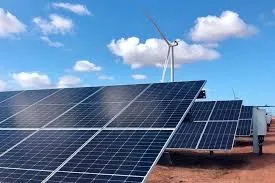Understanding the Benefits and Applications of Micro Inverters in Solar Energy Systems
The Advantages of Micro Inverters in Solar Energy Systems
In recent years, the shift towards renewable energy sources has gained significant momentum, with solar energy leading the charge. Among the various technologies available to harness solar power, micro inverters have emerged as a popular choice among homeowners and commercial users alike. These small devices are attached to individual solar panels, converting the direct current (DC) electricity generated by the panels into alternating current (AC) electricity for use in homes and businesses. Here, we will explore the numerous advantages of micro inverters and why they are becoming the preferred option for solar energy systems.
One of the primary benefits of micro inverters is their ability to optimize energy production. Unlike traditional string inverters, which connect multiple solar panels in series, micro inverters allow each panel to operate independently. This means that if one panel is shaded or underperforming due to dirt or damage, the others can continue to generate electricity at their maximum capacity. System owners can thus achieve higher overall efficiency, particularly in installations where shading is a concern.
Moreover, micro inverters contribute to enhanced system monitoring. Each micro inverter can communicate data about its respective solar panel’s performance, allowing users to track energy production in real-time. This granular level of monitoring enables quicker troubleshooting and maintenance, as potential issues can be identified at the panel level rather than across the entire system. As a result, users can maintain peak performance and maximize their return on investment.
micro inverters

Another key advantage of micro inverters is their safety features. String inverters operate at high voltages, which can pose safety risks, especially during maintenance or emergencies. In contrast, micro inverters operate at a lower voltage, reducing the risk of electrical hazards. Furthermore, most micro inverters come with automatic shutdown capabilities, enhancing the safety of solar installations.
The scalability of micro inverter systems also makes them appealing for various applications. Homeowners can start with a smaller number of panels and easily expand their solar capacity by adding more panels and micro inverters later. This adaptability allows users to gradually invest in solar energy, making it an economically viable option.
Lastly, micro inverters generally have a longer lifespan than traditional string inverters, often lasting 25 years or more, which aligns with the typical lifespan of solar panels. This longevity can result in lower maintenance costs over time, making micro inverters a smart investment for those looking to harness solar power sustainably.
In conclusion, micro inverters offer a range of benefits, including enhanced energy production, detailed monitoring capabilities, increased safety, scalability, and durability. As the demand for solar energy grows, micro inverters are proving to be a valuable asset, empowering users to optimize their solar energy systems effectively. With these advantages, it’s no wonder that micro inverters are becoming a preferred choice in the solar energy landscape.
-
Unlocking Energy Freedom with the Off Grid Solar InverterNewsJun.06,2025
-
Unlock More Solar Power with a High-Efficiency Bifacial Solar PanelNewsJun.06,2025
-
Power Your Future with High-Efficiency Monocrystalline Solar PanelsNewsJun.06,2025
-
Next-Gen Solar Power Starts with Micro Solar InvertersNewsJun.06,2025
-
Harnessing Peak Efficiency with the On Grid Solar InverterNewsJun.06,2025
-
Discover Unmatched Efficiency with the Latest String Solar InverterNewsJun.06,2025







